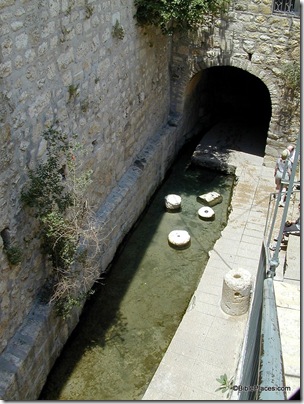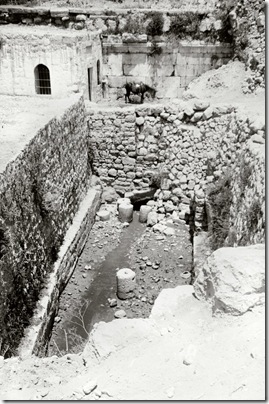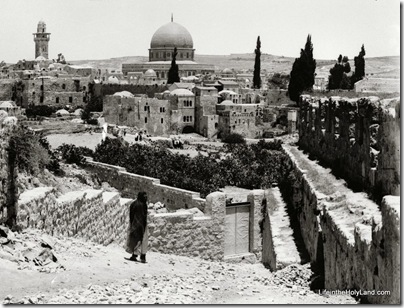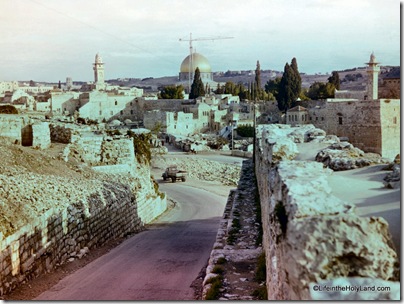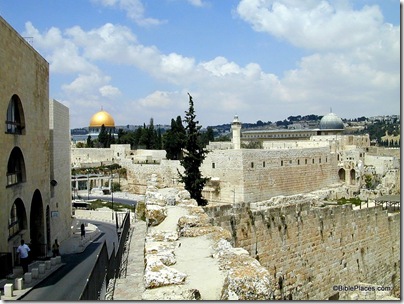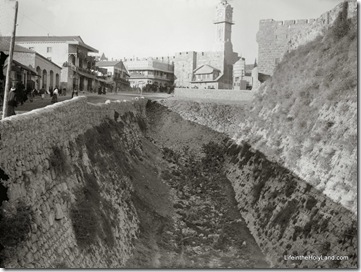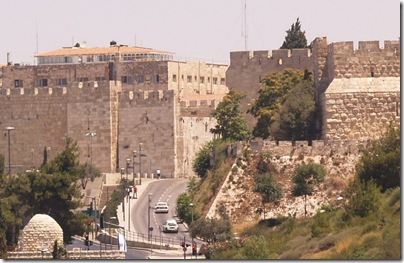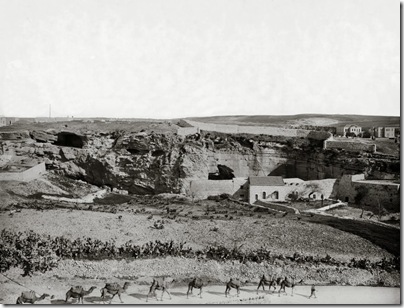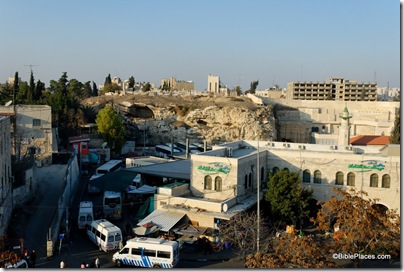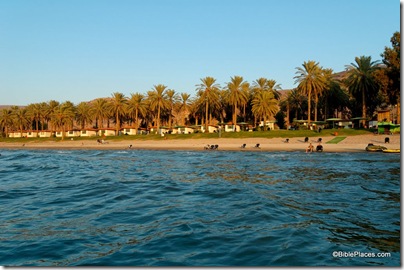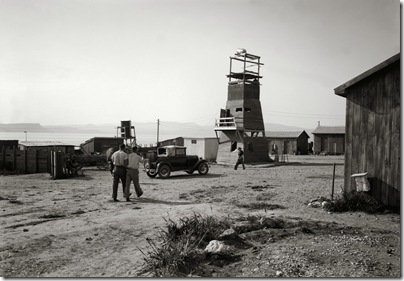Recently a friend alerted me to a discussion online about major renovations to be started soon in the vicinity of Jaffa Gate. Among other things, this will close the gate off to vehicular traffic. If they dig anything up, chances are very high that they’ll find something of significance, which will slow their progress down even further. A source in Jerusalem relates the following:
1. The gate is being closed to car traffic due to road renovations.
2. They may leave one lane open for one-way traffic.
3. The gate is supposed to close soon after Succot (which ended a few days ago).
4. A Muslim policeman “who isn’t trustworthy” said that the gate would NOT reopen ever.
5. Shop owners are concerned about how they will receive supplies.
This is not the first time the authorities have done major work on the road here.
 Jaffa Gate area from east, with Crusader moat of Citadel visible in foreground. Date of photograph: 1898-1907. From the new Jerusalem CD.
Jaffa Gate area from east, with Crusader moat of Citadel visible in foreground. Date of photograph: 1898-1907. From the new Jerusalem CD.